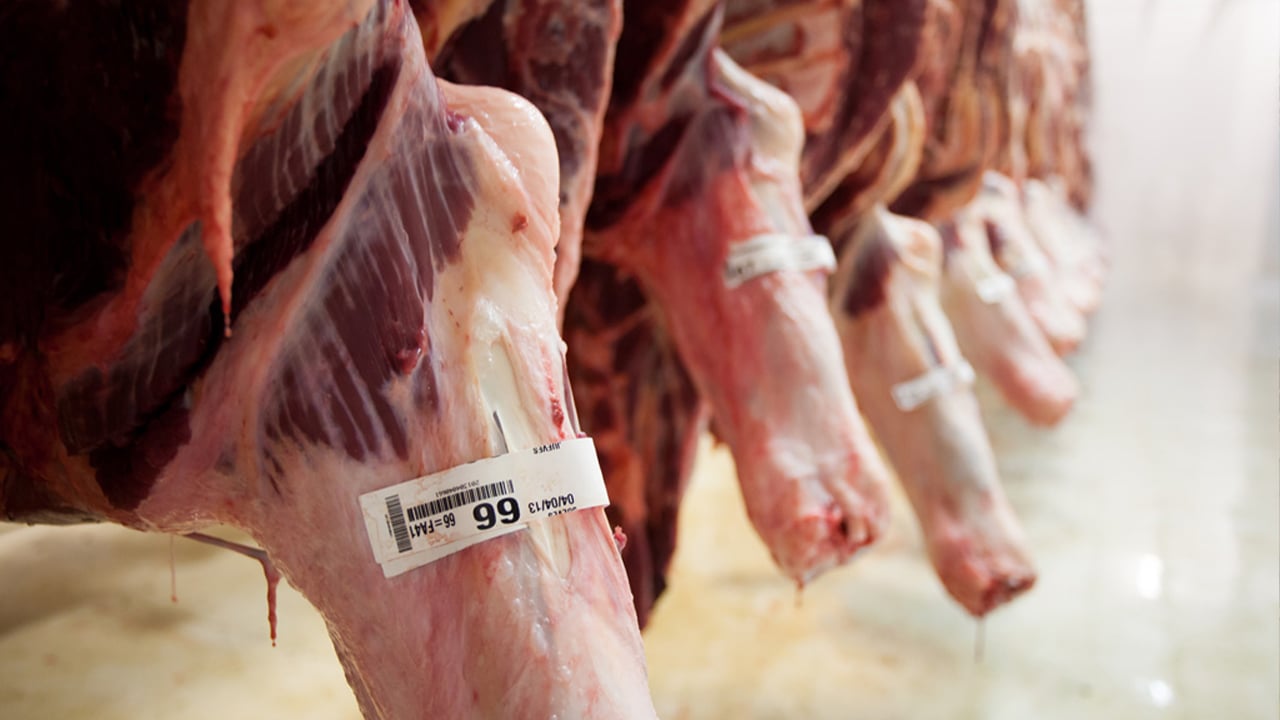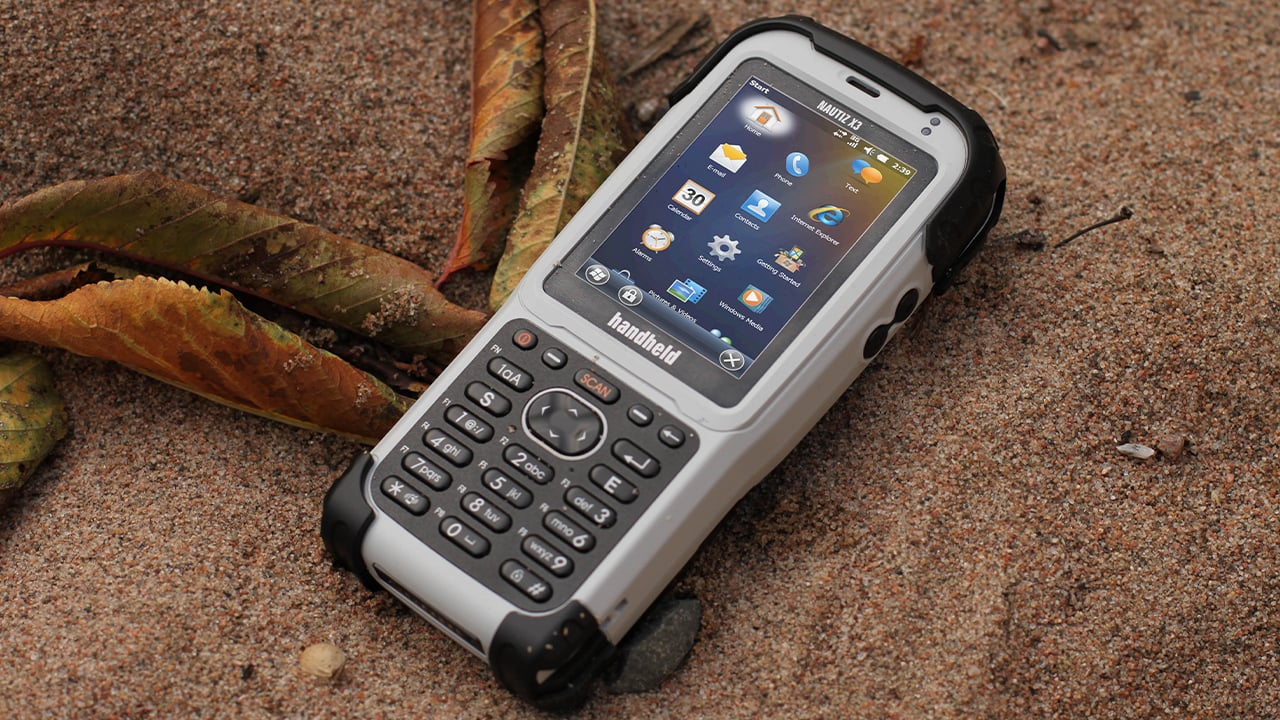Quality control in refrigerated storage
NAUTIZ X3 improves quality control in refrigerated storage facilities
Challenge
Make reliable records of quality control data for meat products in cold, humid refrigeration conditions.
Solution
Monitor refrigerated products using Handheld’s Nautiz X3, a fully rugged data collector and barcode scanner.
Result
Significant time and cost savings for Fridosa, along with higher-quality product offerings.
NAUTIZ X3 collects quality control data under refrigeration to preserve profits, save time and improve product quality for Bolivian meat distributor.
Bolivian meat distributor Fridosa is monitoring and minimizing climatic impact on its cold-stored products with the Nautiz X3, a rugged barcode scanner from Handheld. With this compact field computer, inventory employees can easily maintain a detailed product database that bolsters quality control efforts. Replacing unreliable consumer units with a rugged data collector has resulted in a better product for consumers and saves Fridosa valuable time while preserving profits.
Fridosa, based in Santa Cruz de la Sierra, is Bolivia’s largest meat-product exporter. Its offerings include cuts of meat, burgers, breaded meat, sausages and potato snacks. In order to continue in its tradition of providing high-quality meat products, Fridosa’s quality control staff are using the Nautiz X3 rugged field computer to track and record the weight of meat products along its supply chain.
This is an effective way to identify a compromised storage environment, because meat undergoes surface drying and shrinkage when it’s exposed to fluctuating temperatures and humidity conditions. While a minimal amount of shrinkage is considered normal, weight loss above a certain threshold indicates a climatic problem that needs to be corrected.

Fridosa employees used to track inventory and quality control data by hand. Then they introduced a computer-based inventory management system. This system saved time by eliminating paperwork and manual calculations — but it also introduced some significant problems of its own. Because while cuts of meat thrive in extremely cold, humid environments, most computers do not.
A tough “cold chain” climate
“The main challenges consumer computers face in very cold environments are air condensation inside the equipment, and interrupted operation,” says Eduardo Arce, project manager at Neologic, an information technology provider and Handheld reseller in Santa Cruz de la Sierra.
Fridosa maintains its storage conditions at 90 to 95 percent humidity, with temperatures between 0 and 3 degrees Celsius (32 and 37 degrees Fahrenheit) for refrigerated products and as low as minus 20 degrees Celsius (minus 4 degrees Fahrenheit) for frozen products.
Humidity and condensation from fluctuating temperatures — such as entering and exiting a cold storage locker — can cause harmful electrical shorts inside computer equipment, and extreme cold dramatically shortens the life of conventional computer batteries.
“We tried to implement automated controls with conventional computer equipment. But this equipment did not resist the extreme environmental conditions at the facility, and it deteriorated very quickly,” says Oscar Aguilera, Fridosa’s systems manager.
A cut above the rest
Frustrated with conventional computer equipment and unwilling to return to manual inventory control, Aguilera and his team contacted Neologic to discuss rugged computer options. Fridosa needed a compact field computer with barcode-scanning functionality, one that performs reliably in humidity and low temperatures and communicates wirelessly with other computer equipment.
“Neologic provided us with quotes from different brands, and we found that the Nautiz X3 rugged handheld with barcode scanner fit our needs best in terms of features and price,” Aguilera says.
The Nautiz X3 is small and easy to operate in one hand. It is built specifically for rugged applications in the world’s toughest environments, meeting U.S. military standards for withstanding extreme temperatures, humidity, repeated drops and vibrations. Its IP65 rating means it’s also sealed against dust and water exposure — valuable qualities in an industrial environment. This compact field computer comes standard with a built-in barcode scanner, and its battery lasts all day on a single charge.
Fridosa’s operational staff began using a Nautiz X3 unit in its production facilities. After a trial period, the company decided to purchase additional units. Aguilera says operating the rugged barcode scanners is easy, and the technology works seamlessly within Fridosa’s existing IT environment.
Better quality control with rugged technology
When animal shipments from local ranchers arrive at Fridosa’s facility, they are loaded into refrigerated chambers, processed into four pieces and labeled. Inventory employees use the Nautiz X3’s barcode scanner to read tags affixed to each piece, recording identification information into a database. The pieces are then weighed and digital scales send weight data to Fridosa’s server. The Nautiz X3 reads this data from the server and stores it locally.
The weigh-in process is repeated before meat is dispatched to vehicles for distribution. At any time, inventory employees can view animal identification information, the type of cut, the weight, and the date and time of each scan, directly on the data collector. The Nautiz X3 and Fridosa’s local database communicate back and forth to store all this information in the company’s enterprise resource planning (ERP) software program.

Because employees can use the field computer to identify any excessive product shrinkage at multiple points during processing and storage, Fridosa is able to better control its cold storage environments to deliver the most optimal products possible. Cuts of meat maintain better coloring, appearance, texture and flavor in these conditions — and since meat is priced by weight, preserving the mass of each piece also preserves Fridosa’s bottom line.
“With the Nautiz X3 rugged barcode scanner, we have created a better inventory control system, and we have experienced significant savings with better shrinkage control for our products,” Aguilera says.
Already a success story in the food industry, Fridosa’s smart efforts to improve its processes with rugged data collectors show that preservation truly is an art form — whether you’re preserving the food products you sell, or valuable commodities such as time and revenue.
